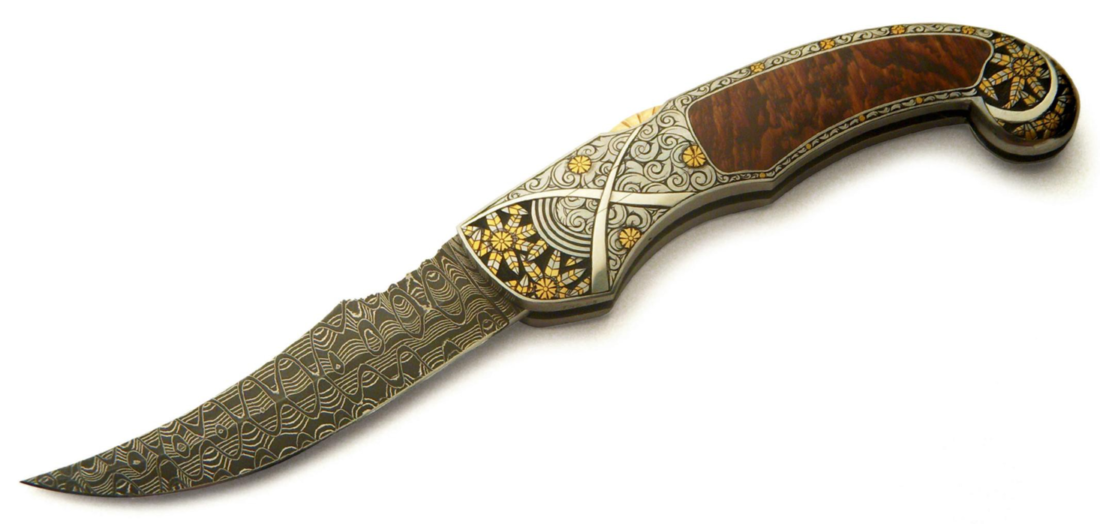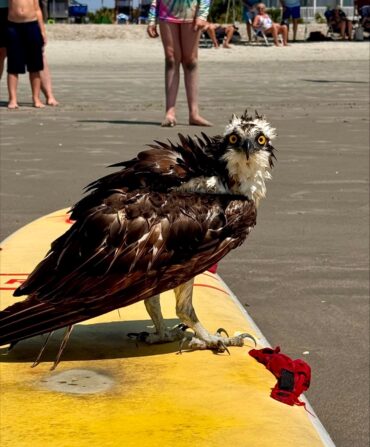Leave it to Americans to put their own stamp on an ancient art form.
Beginning in the second half of the nineteenth century, U.S. factories flooded the market with largely unadorned and mass-produced shotguns, rifles, and pistols. In response, a new generation of custom gun engravers emerged to meet a growing demand for personalization. One of the first to achieve acclaim was the German American engraver Louis Daniel Nimschke, whose set of sixty-two engraving tools today resides in the collection of New York’s Metropolitan Museum of Art. Nimschke is largely credited with popularizing an American style of engraving, which departed from the fine, tightly scripted, and delicate scrollwork of many European practitioners with fluid, bold floral designs, often framed with blank panels to accentuate the foliage, and a punch-dotted background to provide depth and shading.
More than a hundred years later, the storied tradition is continuing its evolution in the tiny foothills town of Altavista, Virginia, just south of Lynchburg, where in a small basement shop, alongside fields and woods where wild turkeys gather, Tim George is putting his mark on the engraving world. One of fewer than fifty master engravers in the country—the Firearms Engravers Guild of America confers the designation—George has decorated Colt single-action pistols, sporting shotguns, scores of custom knives, and even a pocketknife from the esteemed company William Henry that then sold for an astonishing $57,000.
George’s scrollwork is decidedly American, with an even more free-flowing motif than the typical approach. “There are more folds in the leaves,” he says, “and the look has more intrigue than the stop-and-start style.” When he’s engraving birds or dogs or human figures, his influences roam from realistic to art deco to the Italian tradition called bulino, in which he uses a finely pointed hand engraver to impress thousands of tiny dots into nearly photographic representations. And George is a rarity these days, eschewing the more modern pneumatic engraving tools for the old standbys: a small hammer with a delicate handle, and an array of chisel-like engravers, many of which he makes himself.
Of the twelve to fifteen high-level engravers who work with William Henry, only two or three still use an “old-school hammer and chisel,” says the company’s vice president, Rick Thronburg. “Tim has a few trademark styles just like an accomplished guitar player would have a style. I’ll see engraving with gold inlays that wind delicately around like a peavine and tell myself: I bet that’s Tim.”
An avid outdoorsman and a Lynchburg native, George, who is now sixty-one, grew up hunting turkeys with his father, and the family kept a small pack of beagles for rabbit hunting. Early on he showed an affinity for drawing and took as many art classes in high school as he could. When he graduated, he had no idea what he wanted to do. “So I moved to Nags Head,” he says, laughing, “and figured out what I didn’t want to do.”
One day in 1980, George and his brother visited the shop of Ken Hurst, a renowned engraver for the Colt firearms custom shop who had married a woman from Lynchburg and opened an engraving business there. He hired and trained locals in traditional hand engraving, and his company embellished thousands of guns for companies such as Ruger and commemorative firearms for conservation groups such as Ducks Unlimited. “I was immediately hooked,” George recalls. “I walked into a little room, and there were men and women standing at a bench, with a little hammer, just tap-tap-tapping away. I had no idea that such an art form even existed. And for sure I had never come into contact with those kinds of guns.”
Just six weeks later, George went to work for Hurst. Starting pay was forty-five dollars for a finished gun.
He’s since moved up in the world. Today, George keeps a waiting list of clients, and his work ranges from nearly all-consuming commissions to smaller projects that keep his creative instincts sharp. He adorned one client’s childhood shotgun, a 16-gauge Winchester Model 21 side-by-side, with his signature scroll embellished with gold. “He was the only client I’ve ever had who said he didn’t care how much it costs and really meant it,” he says with a laugh. The wall-to-wall scrollwork took him a year, working on the shotgun for two weeks on and two weeks off, to give him time to engrave for other clients.
But he’ll still work on a smaller canvas for a meaningful project—cutting a monogram into a grip cap on a shotgun or a rifle, perhaps, or engraving an ornate butt plate. No matter the job, he uses the same hammer he bought on his first day as an engraver, forty years ago. The same ball vise to hold the work. Many of the same chisel handles. And the same love of an ancient art.








